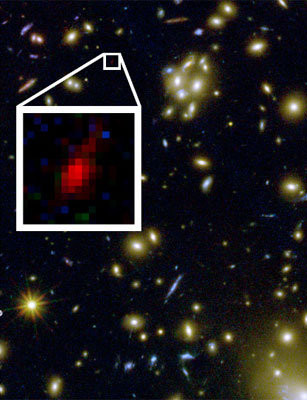Furthest star spotted
 New studies have revealed a star from (relatively) early in the life of the universe.
New studies have revealed a star from (relatively) early in the life of the universe.
Observations from the Hubble telescope have uncovered a distant single star or star system from around 900 million years after the Big Bang, according to international researchers.
The discovery is far more distant than previous observations of similar systems, placing it at a very early stage of the Universe’s evolution.
The object is nicknamed ‘Earendel’, from an Old English word meaning ‘morning star’ or ‘rising light’.
Gravitational lensing, a phenomenon in which distant objects are magnified by closer objects, reveals that it may be an individual star or double star system.
Earendel is estimated to have a mass greater than 50 times the mass of the Sun, and is calculated to be at a redshift of 6.2, the authors report.
Redshift refers to how light is ‘stretched’ as it travels, and can be used to infer the distance of astronomical objects; the bigger the number, the farther away (or earlier in the history of the Universe) the object is. Previous observations of magnified individual stars have been made at smaller redshifts of around 1–1.5.
Precise details of the temperature, mass and spectral properties of the star remain uncertain, something the authors hope the James Webb Space Telescope might be able to determine in the future.
More details are accessible here.







 Print
Print